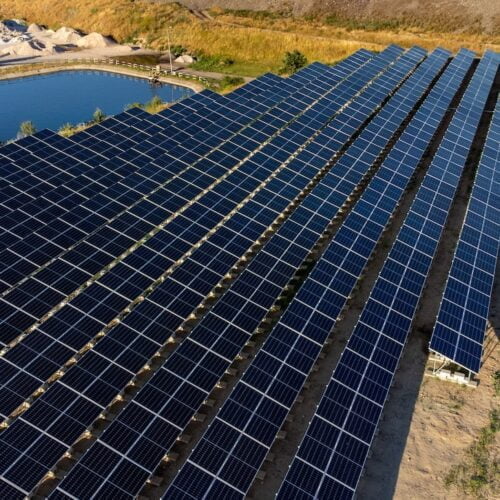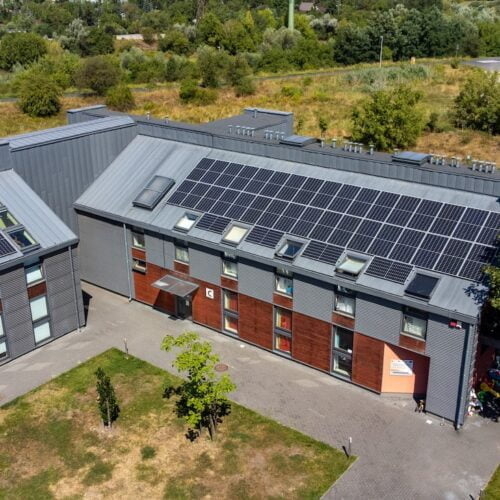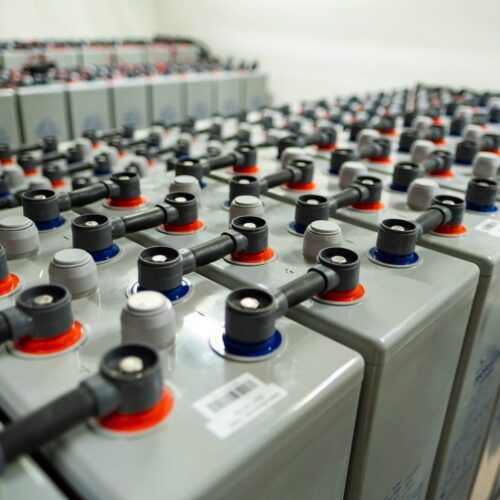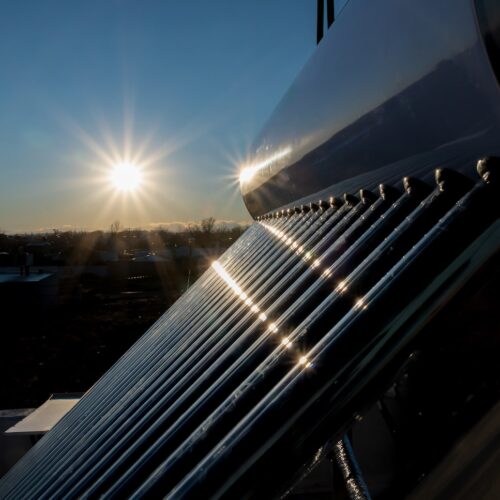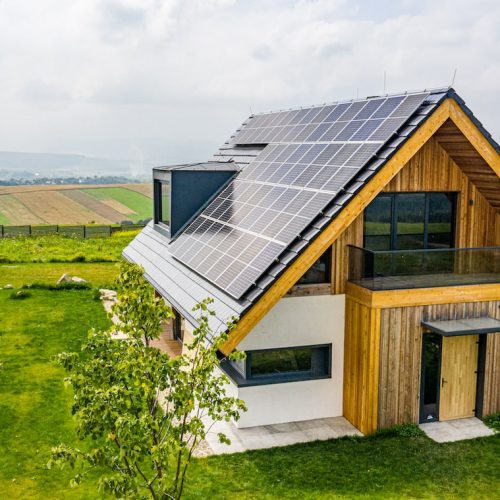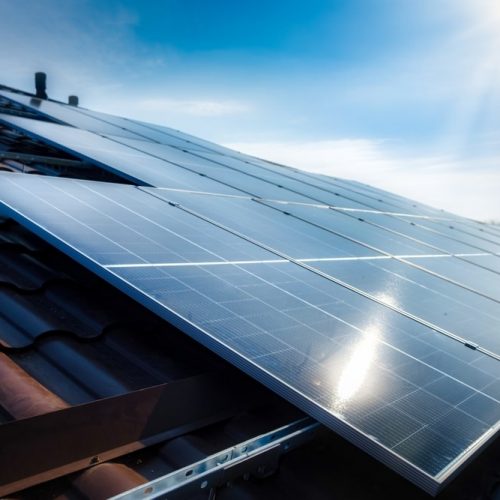Panels are the most important component of a photovoltaic system. Placed on the roof or ground, they are designed to absorb and convert energy from the sun’s rays into electricity that can be used throughout the house.
Photovoltaic panels consist of smaller units, or cells. One cell usually measures 15 x 15 centimeters. In Poland, the sizes of photovoltaic components are standardized, usually one panel consists of 48, 60 or 72 cells. An additional parameter is the power of a single panel.
The size of the panels should be selected depending on what the energy needs of the building are. Our company offers not only the sale and installation of photovoltaics, but also expert advice. If more powerful panels are used, and thus more efficient, the necessary number of panels will be smaller. This is a favorable option for roofs with a small area. On the other hand, even if the roof is too small, the panels can be mounted directly on the ground. Very often it turns out that even a small installation can cover the entire energy needs of a building.
What are the other components of photovoltaics?
Although photovoltaic panels are the main part of the installation, they are connected to several other components. One of them is the inverter, or inverter. It is a box-shaped device that converts the direct current generated by the panels into alternating current. This allows the electricity to be used to power electronic equipment or connect to a heat pump. A system of cables and wires is responsible for the flow of electricity in the building, which supplies energy to all rooms.
An additional component of the photovoltaic system are batteries. Their function is to accumulate excess energy generated, which can be used at a later time or sold to the regional power grid. It follows that the installation of a photovoltaic system can bring profits to users. The whole system is so efficient that free electricity can be used even on cloudy days.







